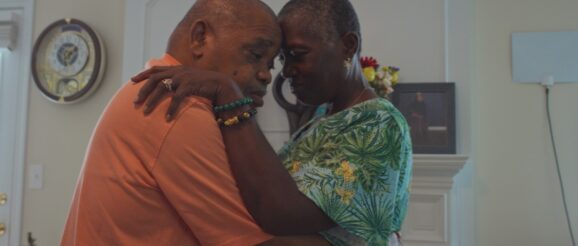Why is caregiving so hard in America? The answers emerge in a new film

For people new to family caregiving, the lack of resources and support often comes as a bitter surprise.
Many people caring for a sick or elderly relative are shocked to find out that Medicare does not cover the cost of a nursing home or subsidize care at home — the cleaning, driving, and helping with meals and dressing that so many families take on. Private health insurance doesn’t pay either. The United States spends far less public money on long-term care than other wealthy nations.
Caregivers are on their own — and according to data from AARP, spend an average of $7,242 out of pocket each year. According to a recent Department of Labor report, they also miss out on an average of $43,500 in income due to the demands of adult care.

In the United States, caregiving is largely a private matter rather than a public concern. Americans caring for elderly or disabled adults cobble together help from noofits, community groups, church, friends and family — and even though there are 53 million of them, often feel intensely alone.
How did we get here?
Caregiving, a new PBS documentary streaming online now (via PBS.org or the PBS app) and airing on June 24, traces how this happened and provides a sense of why. Along with slice-of-life portraits of families caregiving today, it narrates the last century through the lens of care, creating what director Chris Durrance calls “a care history of America.”

The nation has long wrestled with how to think about care, says Durrance. In the last hundred years, we’ve seen both ambitious efforts to create nationwide public supports for care, and eras when caregiving was considered a purely private affair.
In the early 20th century, disabled and older people who needed help were relegated to almshouses, which were public institutions of last resort. Those homes were swamped by the wave of poverty during the Great Depression. In response, President Franklin Roosevelt and his team crafted the nation’s first real safety net in an effort to keep people at home.

Caregiving introduces Roosevelt’s Secretary of Labor Frances Perkins, an architect of the uecedented Social Security Act of 1935. That social insurance program ensured an income for older Americans, plus unemployment insurance and programs to help children, elders and blind people.
But domestic workers — including caregivers — were not eligible to pay into Social Security or receive its benefits. From this early date, the role was accorded this second-class status, as not quite a real job.
During the 1950s, rest homes and convalescent homes emerged, nurtured by a new federal policy that allowed old-age payments to go directly to private nursing homes. Between 1954 and 1965, nursing home beds doubled.
In the 1960s, the legislation creating Medicare intentionally declined to cover long-term care provided by family caregivers or in nursing homes. The rationale was that this care isn’t technically medical. But even back then, legislators feared that the cost of covering long-term care would bankrupt the Medicare program, as law professor Sidney Watson recounts in her review of this history.
Medicaid, the sister program intended for low-income people, was designed to pay for long-term care. And it did — inadvertently nurturing a boom in nursing homes. In the two years after the bill passed in 1965, government payments to nursing homes skyrocketed by 600%. In the 1970s, stricter regulations around building codes and nursing staff favored large institutions, hospital-like settings and the first nursing home chains.

Bettmann/Bettmann Archive/Getty Images
These well-intentioned policies “turned what could’ve felt like living in the community into living in the hospital,” says Watson, an expert at health law at Saint Louis University School of Law. “Once you’ve done that it’s hard to unwind.” Indeed, even as late as 1988 just 10% of Medicaid’s long-term care budget went to pay for care in the home.
The film also considers the 1996 welfare reform laws from the perspective of care, and it explores the failures of the Affordable Care Act — which actually included a provision for a national program for subsidized long-term care insurance, quickly repealed as too expensive.
In 2024, both presidential candidates proposed a tax credit for family caregivers; a bipartisan bill now in the House would establish a federal tax credit of $5,000 a year.
Durrance has seen these signs too. When the team announced the documentary project, he says, they were deluged by handwritten letters, emails and messages on LinkedIn, all from people who wanted to describe their own experiences and urge the filmmakers to act.
“I’ve been in this business a long time,” he says. “I’ve never experienced anything like this. It was a story crying out to be told.”
Caregiving is part of Well Beings, a campaign from WETA Washington, D.C., and was produced by WETA, Ark Media and Lea Pictures with Bradley Cooper serving as executive producer.
Find out more about the film at wellbeings.org, where you can share your own story online , and find resources for caregivers.
